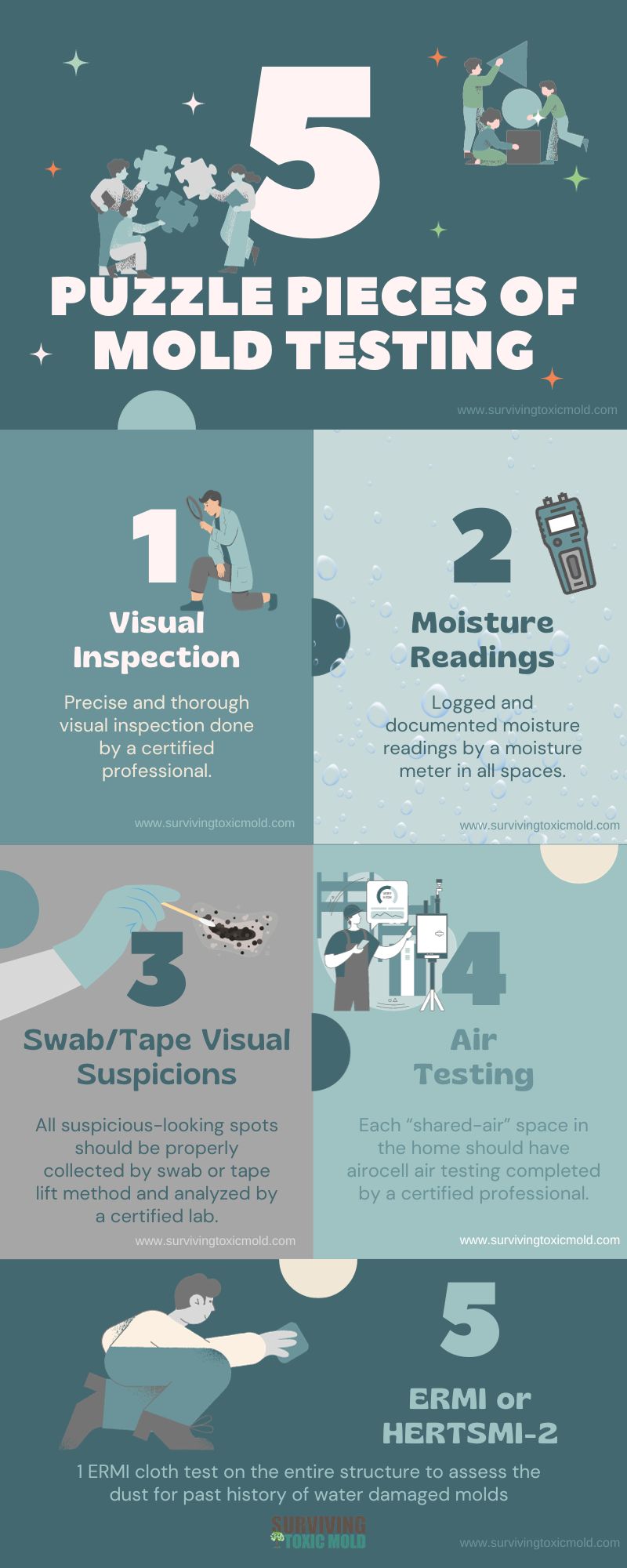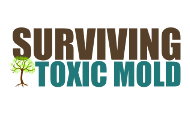Everything you need to know about Mold Testing
Always test your environment to make sure you are dealing with
"TOXIC MOLD", never assume it is safe
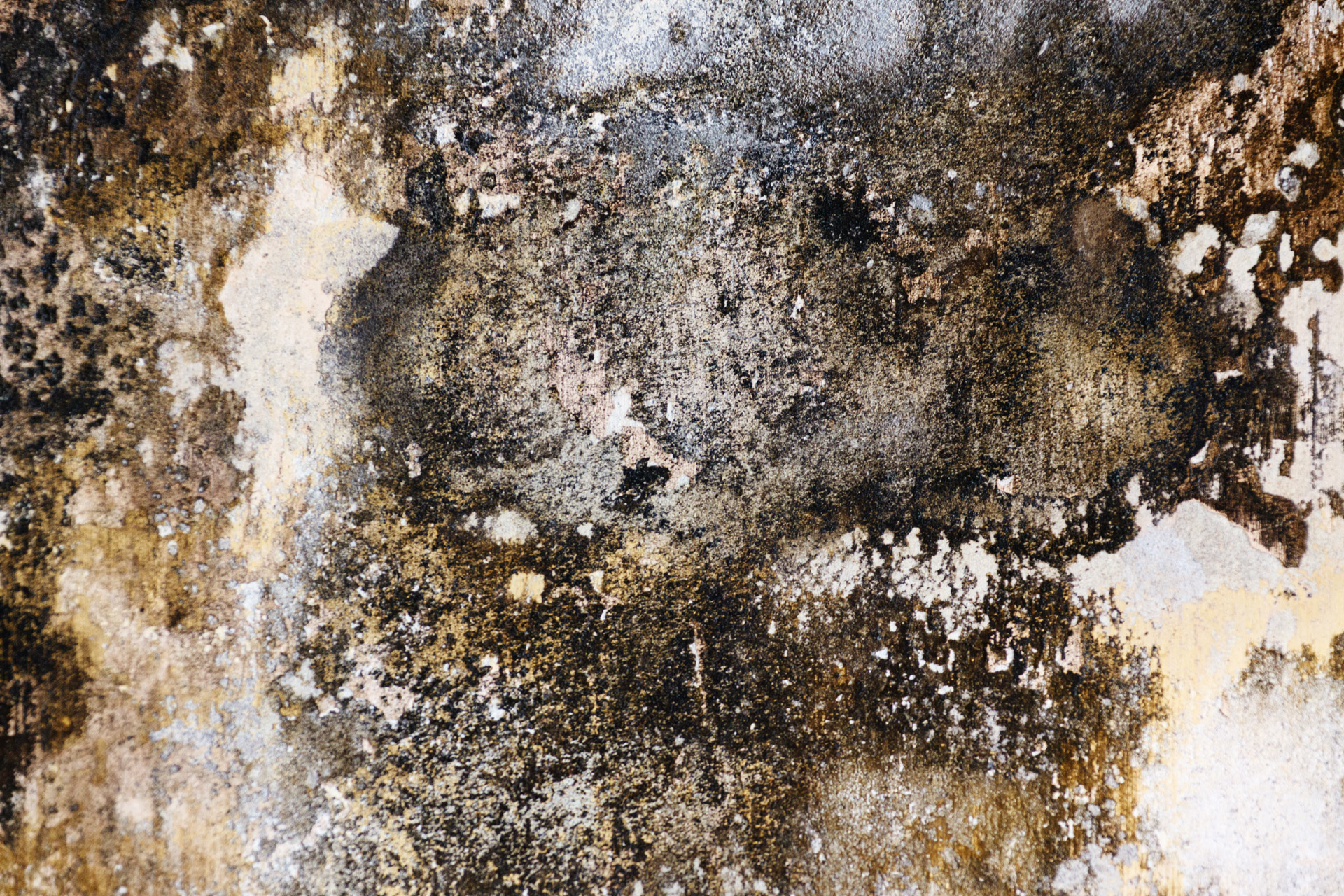 "Not all molds are toxic and not all molds that may be toxic are toxic to ALL people" "Not all molds are toxic and not all molds that may be toxic are toxic to ALL people"
It is important to know what you are dealing with before trying to touch it, clean it or make difficult decisions on whether to remediate your home or throw out possession and leave the environment. Toxic mold "may or may NOT" be the problem, so we always recommend testing before doing anything.
WARNING: "NEVER TRY TO CLEAN or WIPE MOLD"
(Toxic molds put off a neurotoxin when they are touched or disturbed. These neurotoxins are called mycotoxin that if inhaled, swallowed or land on your skin can lead to serious health consequences of permanent neurological damage, cell and DNA death, hemoraging, strokes, permanent heart damage, autoimmune disease, cancers and death)
ALWAYS TEST MOLD BEFORE DISTURBING IT
First, let's discuss "WHAT NOT TO DO" before explaining the best way to test your home for mold
 DO NOT BUY OR USE DIY MOLD TEST KITS or PETRI DISHES FROM THE INTERNET, DO NOT BUY OR USE DIY MOLD TEST KITS or PETRI DISHES FROM THE INTERNET,
HARDWARE STORES OR BIG BOX STORES
Problems associated with DIY mold test kits:
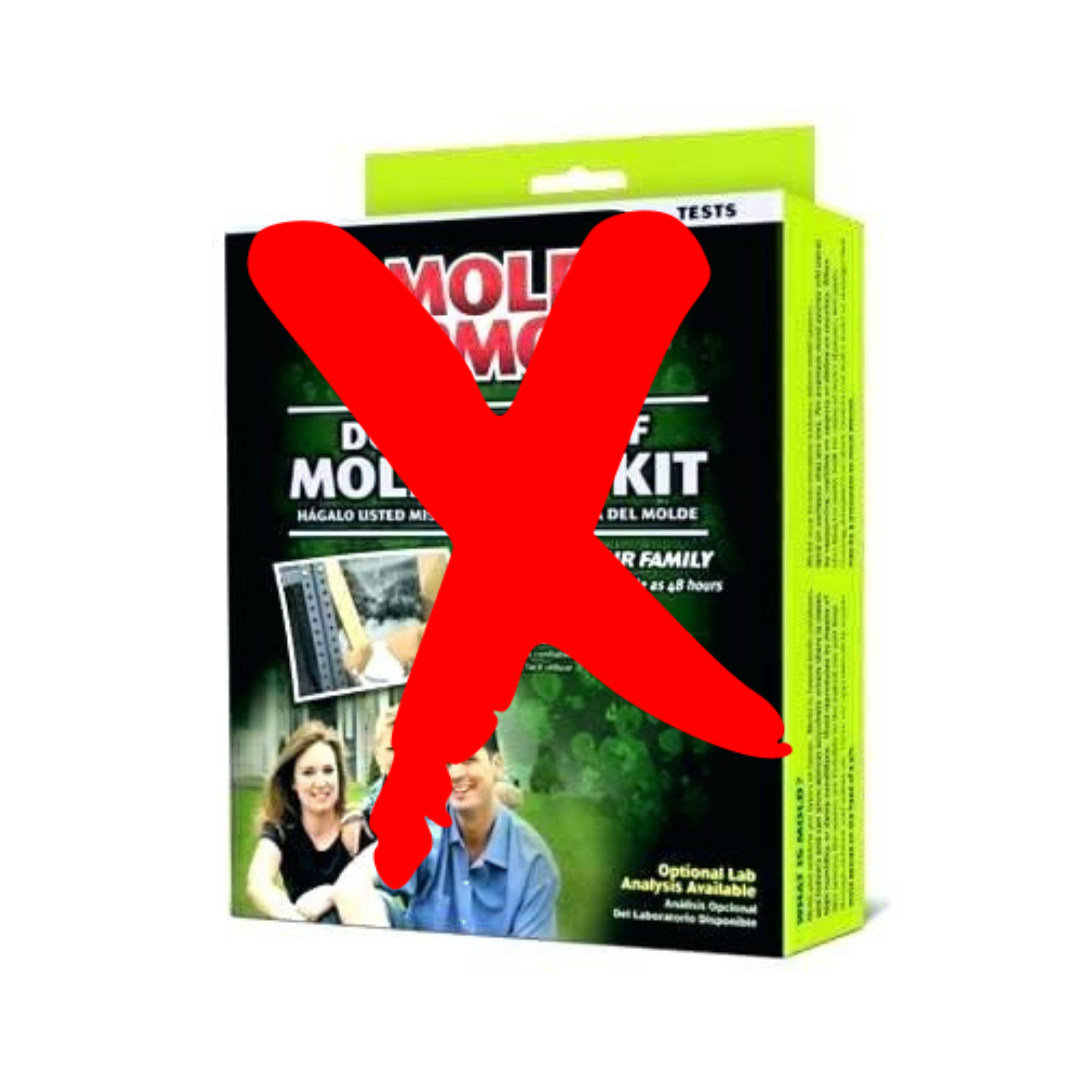
1) No Expiration Dates – DIY mold test kits and Petri Dishes sit on hardware shelves or storage areas for undisclosed amounts of time, subjecting the agar (gooey stuff) to contaminants. Because there is no readily identifiable expiration date for these kits, despite the requirement that they be sterile, consumers cannot determine how much potential handling or exposure these kits have had.
2) Proven Lab Inaccuracies – There have been numerous cases where I’ve been told of “high mold” counts with a DIY kit when the actual levels are low and vice versa with “low mold” counts with DIY kit when the actual levels very high.
3) Uncontrolled environment during Shipping and Handling – DIY kits require being sent through the mail system for “lab analysis.” Such processing is unregulated, leaving the package susceptible to elements such as extreme temperatures and humidity, improper handling, and overall shipping lag time. Such factors can contribute to false positives and false negatives.
4) No Air Flow to Measure Mold In Cubic Units– Most standards and guidelines refer to mold spores per cubic meter or coliform forming unit, but obtaining a level of mold per volume of air is impossible without a controlled airflow through the use of a mechanical pump.
5) No Control Sample – A control sample is necessary to validate the elevation of spores and provide a meaningful reference point, but many DIY kits do not offer a dish to take such a comparison sample from another room or outside.
6) Misleading Marketing – Consumers often think that the DIY kit or petri dish they purchase will quantify and qualify the types of mold they have, but this is not the case. For an additional costs, the petri dishes must be sent out to the lab for analysis (see point 1, 2, 3 for why this is meaningless).
7) No Accredited Laboratory Certification, Endorsement or Chain of Custody – The labs associated with DIY kits are rarely certified (those listed with AIHA-LAP LLC Accredited Labs) and are not endorsed by any accredited agency. Often there is no chain of custody (COC) to properly document the transfer of the kit or to note acceptance of the kit by the lab and critical data such as the date, time of analysis, lab location etc…are often omitted.
8) Kits Do Not Account For Dead Spores: Settling plates and other DIY kits are focused on growing mold, but dead spores can also impact your health. Water damage-makers such as Stachybotrys, Chaetomium and Ulocladium may not show up on the DIY kit.
9) No Inspection – DIY kits or petri dishes do not provide an overall understanding of your mold contamination. A critical part of a comprehensive mold investigation is the inspection process, which requires specialized instrumentation such as digital moisture meters, hygrometers, infrared cameras and other tools along with an expert visual observation.
10) Spore Characteristics Make Some More Likely to “Stick” – Mold spores have unique weight, density and air flow characteristics and do not settle at the same rate. Heavier spores, for example, settle on the petri dishes at a quicker rate and take up more of the sample plate. Sticky molds, especially water damage indicators and Black Mold, might not appear as readily on the DIY kits, but this absence could indicate greater growth elsewhere.
All homes will contain some level of spore activity when air samples are collected because mold is a common part of the environment. DIY kits, then, are essentially useless for diagnosing the complexity of your airborne mold contamination and should be handled by professionals. The EPA agrees: “Sampling for mold should be conducted by professionals who have specific experience in designing mold sampling protocols, sampling methods, and interpreting results. Sample analysis should follow analytical methods recommended by…professional organizations.”
While DIY tests can be used for entertainment value, like a childhood science project for Mother's Day. True toxic mold concerns should be handled by companies that understand the diagnostic process necessary to qualify and quantify potentially hazardous mold growth. Never use a mold kit to protect you or your family's health.
The average person always asks: "Which test is more accurate?"
 Answer: "There is no such thing as: which test is accurate?" Mold testing is a 5 piece puzzle and requires ALL 5 to be combined together to form the best evaluation of an interior space Answer: "There is no such thing as: which test is accurate?" Mold testing is a 5 piece puzzle and requires ALL 5 to be combined together to form the best evaluation of an interior space
Having just one of these tests does not give you all the pieces to the puzzle.
5 steps to test your home or environment for mold
- Thorough Visual Inspection
- Moisture Reading is required
- Swab/Tape lift Testing is required
- Air Testing is required
- ERMI/HERTSMI testing is required
- Video camera inside wall cavities - *Optional
 Thorough Visual Inspection with Moisture Readings: - Includes inspection by a trained professional, includes moisture meter readings and optional video camera inside walls. To find a trained professional in your area who understands not only building science but also is trained on information regarding mold illness, please see our other website here at: www.HomeTestingPros.com (HomeTestingPros.com is owned and operated by Jennifer Cannon, Founder of the Surviving Toxic Mold website) Thorough Visual Inspection with Moisture Readings: - Includes inspection by a trained professional, includes moisture meter readings and optional video camera inside walls. To find a trained professional in your area who understands not only building science but also is trained on information regarding mold illness, please see our other website here at: www.HomeTestingPros.com (HomeTestingPros.com is owned and operated by Jennifer Cannon, Founder of the Surviving Toxic Mold website)
To save money on the moisture inspection part you can purchase your own moisture meter.
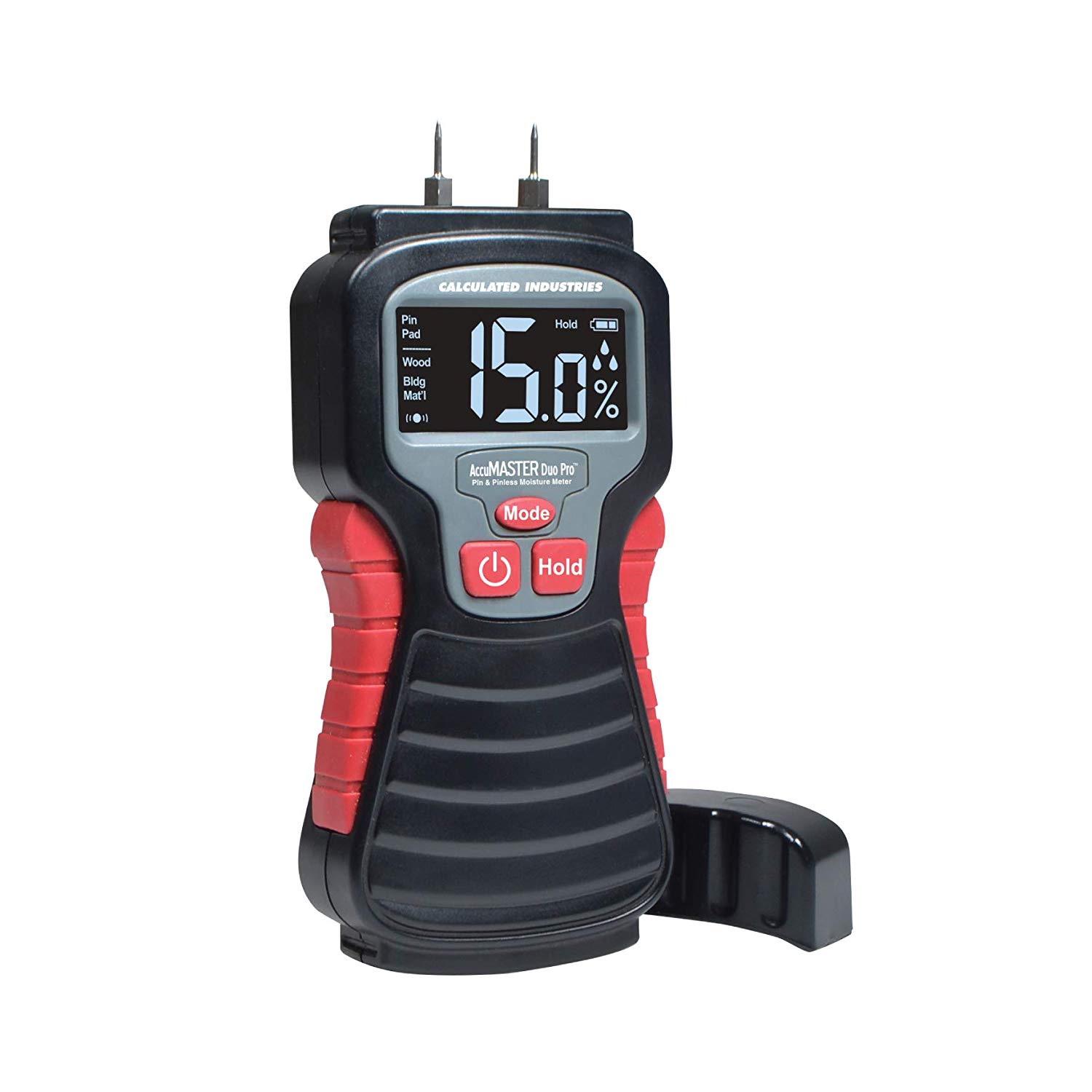
The "Calculated Industries 7445 AccuMASTER Moisture Meter" is my favorite because it detects moisture on up to over 7 different types of materials including:
lumber
building materials
brick
concrete
drywall
plaster
carpet
You can use the pad for quick non-invasive pinless scanning during your mold inspection to find moisture behind a wall or under a floor. Once you locate high moisture areas you can switch and then use the pin feature to identify problem spots and potential leaks. The best part about owning this device yoursel is that you DO NOT need to keep paying $300-$500 every single time you think moisture is an issue in your home. It can also help you use it often to prevent bigger leaks or moisture breaches from happening and save you thousands of dollars re-hiring experts over and over. It really is an awesome device I highly recommend.
You can buy the AccuMASTER Moisture Meter HERE
 SWAB testing: Visual? - Do you see actual mold? If so, a standard swab or some might call it "tape lift" test can identify this mold. SWAB testing: Visual? - Do you see actual mold? If so, a standard swab or some might call it "tape lift" test can identify this mold.
- USE A PROFESSIONAL ONLY. (Do not use test kits from hardware stores. They are not accurate. See above why test kits or petri-dishes are not accurate ways to test a home for toxic mold.)
- It is important to locate a reputable mold testing company before spending money on a hiring a professional to do any swabs. I own a company called www.HomeTestingPros.com that trains mold testing professionals how to effectively test home for mold for people with CIRS, Mold Illness, Sick Building Syndrome, MCS, MCAD, Asthma, Cancers associated with water damaged buildings and other mystery diagnosis like CFS, Fibromyalgia, Auto-Immune etc. Fill out the form on my website and one of our staff or technicians will call you to set up a time to come out and properly test your home. *This is not a free service so make sure you are serious about making the investment in testing for your home before you fill out the form. You are inquiring to hire a highly trained mold inspector.
- Swab testing ONLY reveals what is in that particular swab. It does not identify mold spores in the air that you or your family are breathing. It is important to also get AIR and ERMI testing below for safety.
 AIR testing or (control testing): Air samples can be used to gather data about mold spores present in the interior of a house. Usually one test is done outside the home (called a control sample) and then as many rooms as one's budget will allow for are also tested inside the home to compare normal outside natural mold levels to indoor levels. These samples are taken by using a pump that forces air through a collection device which catches mold spores. Air samples alone are not enough to confirm or deny the existence of toxic molds because some molds are light and float in the air and some of the most deadly molds are considered "HEAVY" and never float in the air such as "Stachybotrys" (the worst mold in existence). Air testing needs to be an addition to a visual inspection and other methods of data collection, such as a surface samples that include BOTH Swab and ERMI testing. AIR testing or (control testing): Air samples can be used to gather data about mold spores present in the interior of a house. Usually one test is done outside the home (called a control sample) and then as many rooms as one's budget will allow for are also tested inside the home to compare normal outside natural mold levels to indoor levels. These samples are taken by using a pump that forces air through a collection device which catches mold spores. Air samples alone are not enough to confirm or deny the existence of toxic molds because some molds are light and float in the air and some of the most deadly molds are considered "HEAVY" and never float in the air such as "Stachybotrys" (the worst mold in existence). Air testing needs to be an addition to a visual inspection and other methods of data collection, such as a surface samples that include BOTH Swab and ERMI testing.
- It is important to locate a reputable mold testing company before spending money on a hiring a professional to collect any air samples correctly. I own a company called www.HomeTestingPros.com that ONLY WORKS with certified mold testing professionals who have passed state regulation requirements. We then offer additional training to these mold testing professionals on how to effectively test home for mold for people with CIRS, Mold Illness, Sick Building Syndrome, MCS, MCAD, Asthma, Cancers associated with water damaged buildings and other mystery diagnosis like CFS, Fibromyalgia, Auto-Immune etc. Fill out the form on my website and one of our staff or technicians will call you to set up a time to come out and properly test your home. *This is not a free service so make sure you are serious about making the investment in testing for your home before you fill out the form.
 ERMI testing: The ERMI is an acronym for Environmental Relative Moldiness Index. This test is based on dust samples collected from throughout a home or building. 36 different fungi make up the ERMI and are designed as Group I (those found in a typical, water damaged home) and Group II (those commonly found in all homes). ERMI testing is most always performed by the homeowner themselves. You can order an ERMI test online from either of these providers: ERMI testing: The ERMI is an acronym for Environmental Relative Moldiness Index. This test is based on dust samples collected from throughout a home or building. 36 different fungi make up the ERMI and are designed as Group I (those found in a typical, water damaged home) and Group II (those commonly found in all homes). ERMI testing is most always performed by the homeowner themselves. You can order an ERMI test online from either of these providers:
- Envirobiomics
- Mycometrics
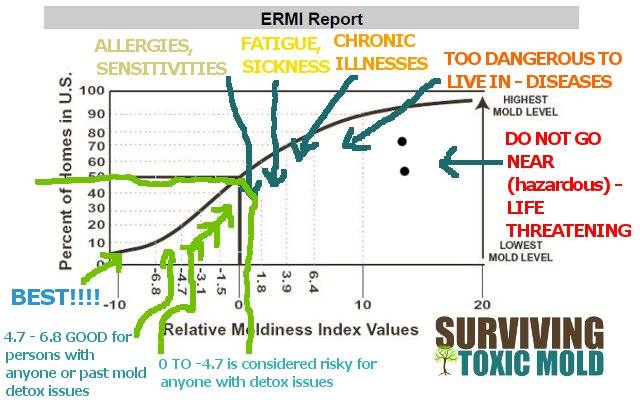
CLICK HERE TO GET YOUR GUIDE ON "HOW TO DO AN ERMI TEST CORRECTLY"
Just $9.95

(Optional ARMI testing): The ARMI is an acronym for American Relative Moldiness Index. This test is a more cost efficient version of the ERMI testing but is not as thorough. This test correlates with the ERMI for predicting the moldiness of homes. 13 different fungi make up the ARMI and are designated a group 1 (found in typical, water damages homes) and group 2 (commonly found in all homes). The fungi identified in the ARMI tests are: Stachybotrys chartarum, Chaetomium globosum, Cladosporium sphaerospermum, Aspergillus versicolor, Eurotium (A.) amstalodami, Penicillium variabile, Aspergillus flavus, Aspergillus restrictus, Penicillium crustosum, Penicillium purpurogenum, Aspergillus fumigatus, Penicillium corylophilum,
(Optional MSQPCR testing): MSQPCR is an acronym for Mold Specific Quantitative Polymerase Chain Reaction. This test is a FAST, ACCURATE, and SENSITIVE DNA-based analytical method for identifying and quantifying molds to the species level types they belong to. This testing method looks for the presence of DNA sequences that are unique to a particular mold species.
How much does mold testing "BY AN EXPERT" cost?
Thorough Inspection: Will be between $150-$300 depending on the size of the home or if there are hard to reach attic or crawl space areas.
Air Testing: Will be between $200-$300 (for one outside/control sample and one inside room sample). Most additional room samples cost between $75 - $150 each additional room.
Swab/Tape samples - Each small area physical samples will be $75 - $150 per sample (This is for visible mold colonies you are concerned about)
ERMI Test - ERMI tests (Done yourself) cost about $275, however most people do not collect the samples correctly. If you want your expert technician to do it for you it will cost an additional $100-$150. OR............you can save money and buy my ebook on how to do your own ERMI test "correctly" the first time by yourself:
Ever wonder how to "properly" collect an ERMI test? In this guide, I have included the best way to get the most accurate results from an ERMI dust cloth test. Included is a long list of areas "TO COLLECT FROM" as well as a list of areas to "NEVER" collect dust from. By collecting your ERMI in the correct areas, you increase the accuracy of getting the correct readings instead of getting false readings. https://www.survivingtoxicmold.com/my_books___guides/
HOW MUCH IS the "AVERAGE" overall cost of getting all of this done on your home?
For an expert and thorough testing and inspection of a home figure about $1200-$1400 Total. This will tell you "everything" you need to know about the possible mold in your home.
(RED FLAG): If you run into a mold inspector charging more than this to do a complete mold inspection AND testing properly, you are probably being taken advantage of. And trust me, I've met tons of inspectors charging thousands of dollars and somehow justifying it because frankly, let's just be honest: Most people have no idea what this stuff even costs.
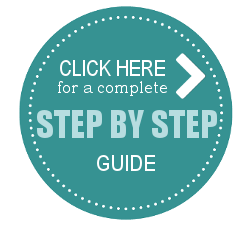 Is mold making you sick? Put the effects of Toxic Mold behind you!! Is mold making you sick? Put the effects of Toxic Mold behind you!!
Do you think you might have mold in your home, place of business or school? Are you or someone you love suffering from an unknown illness that doctors can't diagnose? Is mold making you sick? Go to our Step by Step and start Surviving Toxic Mold.
|

 "Not all molds are toxic and not all molds that may be toxic are toxic to ALL people"
"Not all molds are toxic and not all molds that may be toxic are toxic to ALL people" 

 Answer:
Answer: 